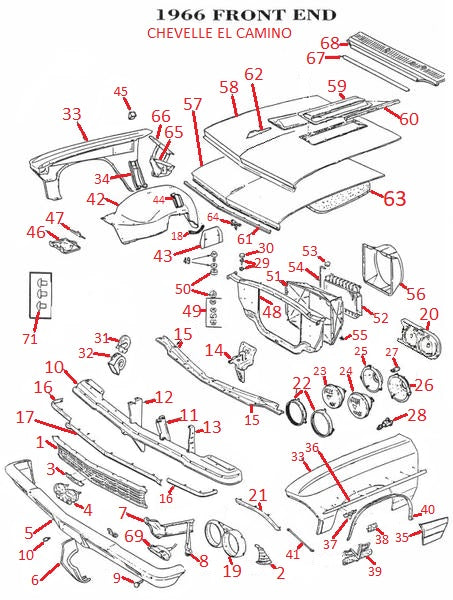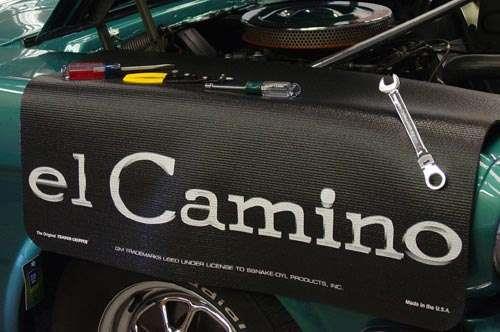

At some time during this period it acquired a dark Vicodec roof. Wilson until 1957 when he presented it to his secretary. The prototype "Coupe de Ville" was used by GM President Charles E. It was equipped with a telephone in the glove compartment, a vanity case and a secretarial pad in the rear armrest, power windows and highly decorative chrome interior trim. The interior was black and trimmed in gray leather, including the headliner, to match the roof color.

It was built on a Cadillac Sixty Special chassis and featured a dummy air-scoop, chrome trim around front wheel openings, and a one-piece windshield and rear glass. The first Cadillac "Coupe de Ville" was shown during the 1949 Motorama.
#68 el camino fender emblem driver
An (unshortened) limousine or (in the United States) town car has a division between the passenger and driver compartments and if the driver's seat is outside it may be called a sedanca de ville or town car.

shorten or reduce, was a short four-wheeled closed carriage with an inside seat for two and an outside seat for the driver and this smaller vehicle was intended for use in the town or city (de ville). In French coach building parlance, a coupé de ville, from the French couper (to cut) i.e. The name "DeVille" is derived from the French de la ville or de ville meaning "of the town". The last model marketed specifically as a DeVille was the 2005 full-size sedan, at the time, Cadillac's largest model.įor 2006, the Deville nameplate was retired, when the model line was carried forward (with minor revisions) as the Cadillac DTS, using a nomenclature adopted by the Cadillac STS and CTS.Įarly history 1950 Cadillac Series 62 Coupe de Ville Cadillac Coupe de Ville badging The Cadillac DeVille is the nameplate used by Cadillac over eight generations, originally used to designate a trim level of the 1949 Cadillac Series 62 and later to designate a standalone model in the brand range. Transverse front-engine, front-wheel drive (1985–2005)


 0 kommentar(er)
0 kommentar(er)
